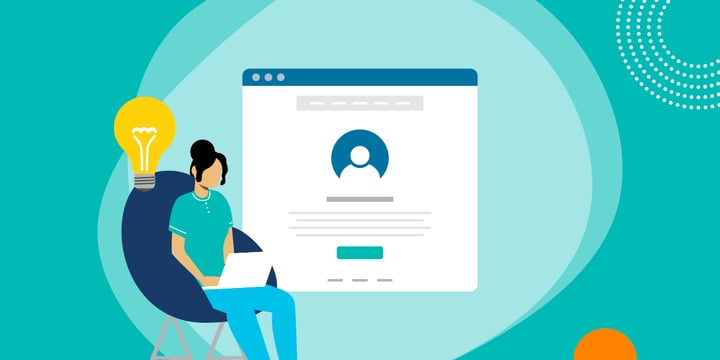We have been following closely U.S. COVID relief legislation throughout this pandemic year. The Paycheck Protection Program (PPP) funding has been particularly important to nonprofits. The good news is that the new $900 billion pandemic relief package that was signed into law in late 2020 includes another round of PPP loans. It includes special funds earmarked for nonprofits and small organizations, including churches and faith-based organizations. If PPP loans are used for payroll expenses, the loans can be forgiven and function like large grants. If your organization continues to struggle from the hardships of 2020, we strongly encourage you to apply for a PPP loan as soon as possible. It could be a lifesaver for your charity.

The new relief package features a $284 billion second round of PPP loans. Nonprofits with at least a 25 percent revenue drop in any quarter of 2020 (compared with 2019 revenues) can apply for a second forgivable loan. Organizations that did not receive PPP money in the first round are also eligible.
In the first round of PPP loans last spring, one of the most significant issues with the PPP implementation was that many lenders favored large businesses with large loans. Many small organizations couldn't find lenders to work with. Steve Dubb on Nonprofit Quarterly recently explained why small banks are often a better bet to successfully apply for a PPP loan. The second round of loans uses the same Small Business Administration (SBA) program but includes some fixes to address this issue.
What You Need to Know
The process depends on whether this is the first or second time you apply.
First-Time Loan Applications
- PPP loans are on a first-come-first-served basis. Maximum loans of $10 million are available for first-time PPP borrowers.
- Loans can be as much as 2.5 times your monthly payroll costs.
- Lending started on January 11, 2021, for new borrowers. PPP loans must be used within 24 weeks of approval by your bank or credit union.
- Applications will be accepted through March 31, 2021. But we strongly urge you to apply as soon as possible.
Second-Time Loan Applications
Second-time PPP loans are also on a first-come-first-served basis. Loans can be as much as 2.5 times your monthly payroll costs up to $2 million. Lending started on January 13, 2021, for second-time applicants. Again, applications will be accepted through March 31, 2021.
- To qualify for a second loan, organizations must have fewer than 300 employees (down from the previous requirement of fewer than 500 employees).
- You must have already used up your first PPP loan. Second PPP loans must be used within 24 weeks of approval.
- You must show a 25 percent reduction (in gross receipts) from at least one quarter of 2020 compared with the same quarter in 2019.
- Like the first round of loans, PPP loans are forgivable, so long as 60 percent of the funds are used on payroll costs.
- If your organization took out a PPP loan for less than $150,000 in the first round, the process of applying for loan forgiveness is now simplified to a one-page application.
Special Help for Small, Minority-Run, and Hard-Hit Organizations
Congress has increased reimbursements to lenders on loans that are less than $50,000. This will hopefully incentivize lenders to work with small nonprofits and businesses. The SBA has simplified the process in Form 3508S for borrowers with loans less than $50,000. Nearly 70 percent of PPP loans so far have been under $50,000.
- Out of all second-round PPP loans, $12 billion is designated specifically for minority-run or -owned organizations and also charities in underserved communities. Many churches and faith-based organizations are in such communities.
- The bill also aims to assist organizations in industries that have been disproportionately hurt, like nonprofit performing arts and cultural institutions.
- The new law sets aside $15 billion of the total money for small community banks, credit unions, and community development financial institutions (CDFI).
- Like the April CARES Act, the new pandemic relief package now allows nonitemizers to deduct up to $300 in charitable giving for the 2021 tax year.
How to Apply
You can apply for a PPP loan through any existing SBA 7(a) lender or through any federally insured depository institution, federally insured credit union, and Farm Credit System institution that is participating in the program. Find a list of approved lenders by state and zip code here.
To prepare for the application process, find downloadable PPP borrower application forms on the SBA website.
- Paycheck Protection Program First Draw Borrower Application Form (revised 01-08-21)
- Paycheck Protection Program Second Draw Borrower Application Form (revised 01-08-21)
Your chances to successfully apply for a PPP loan are probably best if you can apply to a bank where you already have an account. For those seeking a Paycheck Protection loan but are having a hard time finding a local lender, you might try PayPal or TechSoup corporate partner Intuit QuickBooks. Both companies are approved to provide access to PPP loans.
These are the key documents you will need when you apply:
- Your 2020 IRS quarterly 940, 941, or 944 payroll returns
- Your payroll report for a 12-month period ending on your most recent payroll date, which includes gross wages to each employee if paid by W2, paid time off for each employee, vacation pay, family leave pay, and state and local tax assessments on employee compensation
No collateral or personal guarantees are required for PPP loans. Neither the government nor lenders will charge small businesses any fees. However, borrowers will need to pay interest on the loans at an interest rate of 1 percent.
Please Apply ASAP
Applying for a PPP loan is not necessarily a slam dunk. It takes work and tenacity, especially to line up a lender. But the new relief package rules now favor nonprofits, churches, and faith-based organizations much more than they did in the spring. Forgivable PPP loans may well be a windfall for your organization if you are struggling with donation shortfalls and are having trouble keeping your organization open. Once again, we strongly encourage you to apply for a PPP loan as soon as possible. It could be a lifesaver for your charity or church.
TechSoup Resources
Webinar recording: PPP Forgiveness and Payroll During Year-End for Your Nonprofit
Webinar recording: The CARES Act and Your Nonprofit: What You Need to Know
Blog post: What Nonprofits Need to Know Now About the New CARES Act
Resource page: Resources for Nonprofits Impacted by COVID-19







